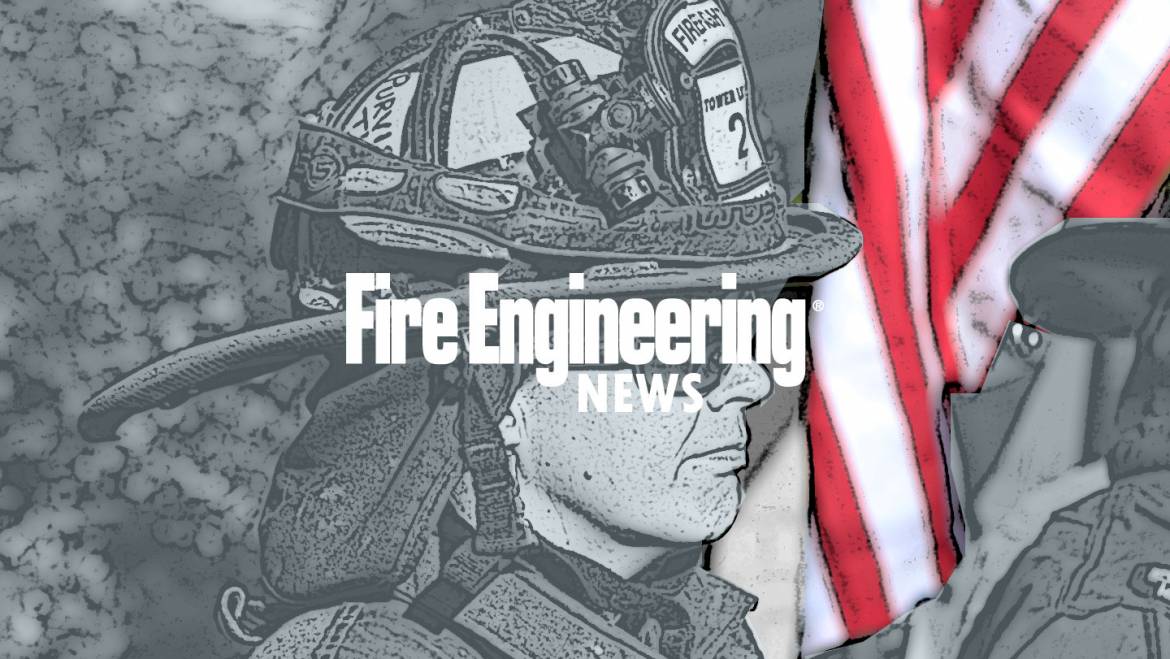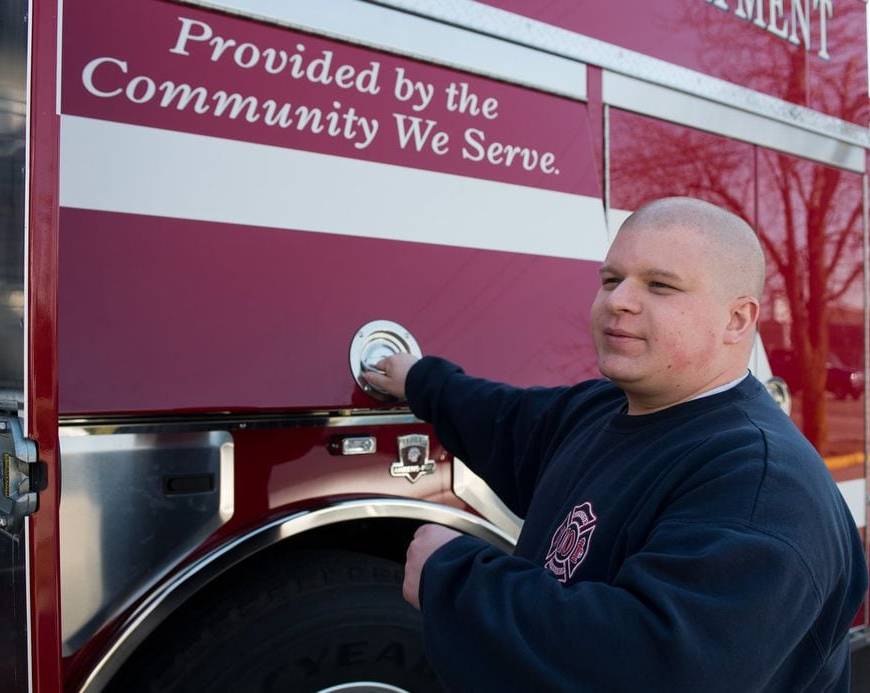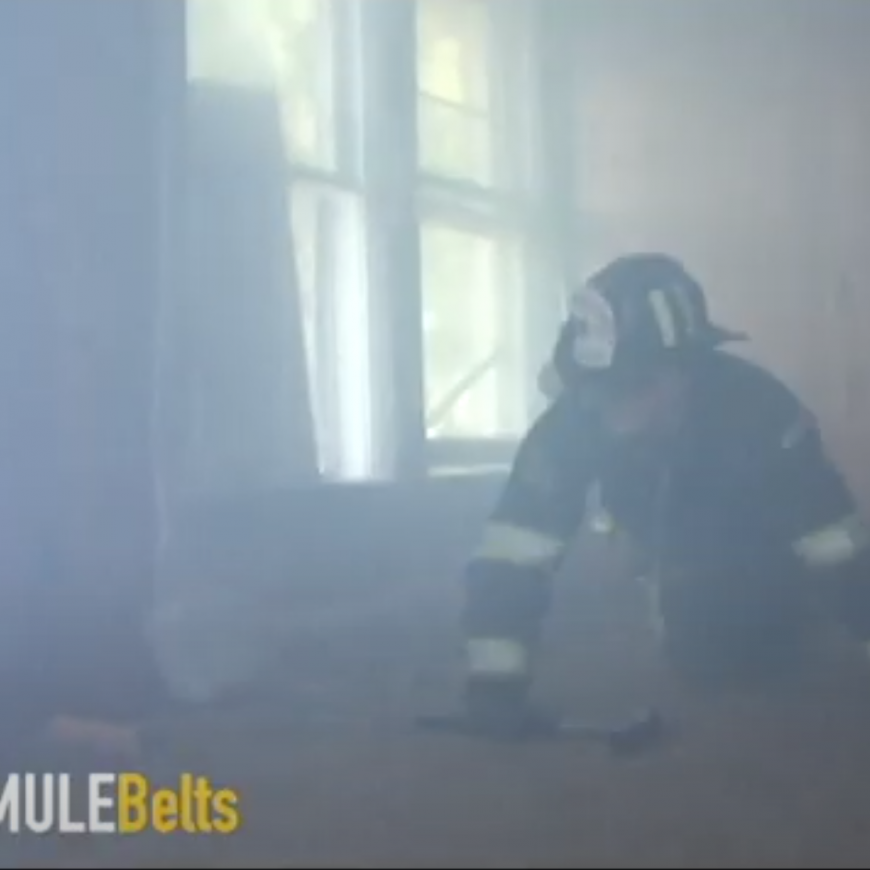By KATHERINE H. WEST
With the passage of the Omnibus Appropriations Act, 2009, medical facilities were put on notice that they may not receive government reimbursement for Health Care Associated Infections (HAIs). Note that HAIs were formerly known as “hospital associated infections”; this new term is broader, which will bring many other entities into focus, including fire/emergency medical services (EMS).1
- Duties of a Designated Infection Control Officer
- Firefighter Basics for Infection Control
- Communicable Disease and the Fire Service
An HAI is diagnosed two days after the patient’s admission and is unrelated to the patient’s admitting diagnosis. This broader definition has resulted in medical facilities looking closely at patient care practices outside the medical facility that could be the link to the patient’s infection. A recent study conducted by Duke University sought to summarize literature about HAIs in the medical transport environment, and a total of 34 articles were identified for across the globe. This article will focus just on the articles and data that were identified in the United States. It was in this study review that the term “medical transport acquired infection” (MTAI) was introduced.2
Study Data
It is noted in the Duke University review that the data on the topic of patient transports on exposures and HAIs is limited. Patients are often transported by air as well as ground ambulance services. According to the Centers for Disease Control and Prevention (CDC), in 2017, there were 14.5 transports to emergency departments per 100 population.3
MTAI is used as a “subset” of HAI, defined as, “Any infection acquired as a direct effect of exposure in a medical transport setting.” The working definition for a medical transport setting is, “Any vehicle that is used by medical professionals to transport patients during anytime, whether emergency or planned, designated, or improvised.” A transport setting can be a ground ambulance, helicopter, or fixed-wing air ambulance. The focus of the review for this study was on patient medical transport associated infections (P-MTAIs).
In the first part of the Duke University study review, the team found only two studies presenting data on gross contamination of ambulances, and neither involved vehicles in the United States. However, when looking at common bacteria found in the transport environments in the United States between 2003 and 2018, vehicles were found to have many different bacteria such as Staphylococcus aureus, Pseudomonas, and Klebsiella pneumoniae, among others. A fungal agent, Aspergillus, was also found.
Care Provider Perceptions on Hand Washing and Compliance
A review of nine other studies found that methicillin-resistant Staphylococcus aureus (MRSA) and vancomycin-resistant enterococci were also noted and linked to improper hand washing.4 In a World Health Organization (WHO) meeting on hand hygiene compliance in health care, it was noted that there are few studies on infection control and hand hygiene in EMS and that compliance with hand hygiene is not closely monitored, which could result in the spread of infections to patients.
In this study, 77% of EMS providers were found to have heavy bacterial load on their hands after patient care. Few of the providers performed hand hygiene before patient care (34%), and fewer (24%) performed hand hygiene between patients as recommended by the CDC and WHO. With the new definition of HAIs, there will be a stronger focus on looking at EMS practices and how they might affect patients developing HAIs.4
A large cross-sectional study in 2012 of outcomes of a pilot program conducted to promote hand hygiene in Florida revealed that 28.9% of providers stated that they simply forgot to perform good hand hygiene, 11.6% stated that there was difficulty locating a hand wash solution or water to perform hand washing, 8% stated that they thought wearing gloves negated the need for hand washing, and 2.7% stated fatigue was a factor.
Following these findings, a training program was developed to focus on these results by reviewing proper hand hygiene techniques and adding alcohol-based hand wash stations and reminder signs.
Following this intervention, 24% stated that the adding of hand wash stations and reminder signs led to more compliance with hand washing. Another 58.8% stated that adding the hand wash dispensers in the rescue vehicles increased compliance with hand washing during and following patient care. Additionally, 28.1% of participants stated that adding the hand wash dispensers in the stations along with the reminder signs assisted in staff cleaning their hands.5 This is an example of compliance monitoring leading to corrective action.
Compliance with General Cleaning Routines and Practices
With several studies focusing on documented low compliance with hand washing practices, it begs the question: What other practices may impact possible patient infections because of medical transport? When conducting a review of the areas found to be contaminated in departments in the United States, here are some of the results.
In 2015, in a department in Maryland, culture swabs revealed that 9.68% of provider hands showed positive for Staph aureus. In Mississippi, swab cultures revealed the presence of Pseudomonas on the seat track and stretcher. In a 2017 study that was conducted across the United States, a wide variety of organisms including Staph aureus, Klebsiella pneumoniae, Pseudomonas aeruginosa, Streptococcus, and Enterococcus were identified. These organisms, which can be the source for patient infections if cross-contamination occurs, were noted in the following locations in ambulances (Table 1).6

Another study involving oxygen cylinders revealed that 96% to 100% were colonized with MRSA.7 Yet another study from the United States conducted in 2018 showed that 32% of stethoscopes were found to be contaminated. In 2014, an article on an observational study in prehospital emergency care in a large urban area of Nevada was published involving 423 EMS responses conducted by 899 EMS providers. The responses showed that 512 (56.9%) EMS providers wore gloves on arrival to a scene of care. Hand washing was observed in 250 (27.8%) of the providers. Reusable medical equipment was disinfected in 31.6% of the calls. Backboards, for example, were disinfected 31.6% of the time. The most common area to receive disinfection was the stretcher, with cleaning being performed 55% of the time. The ambulance cleaning was 33.3% of the time observed.8

Compliance Monitoring: How and Why
These studies clearly show that there is a need to ensure basic infection control practices are in place in EMS systems and services. The Occupational Safety and Health Administration (OSHA) Bloodborne Pathogens Regulation (29 CFR 1910.1030) lays out the requirements for cleaning and disinfection of vehicles and equipment. The OSHA Compliance Directive (CPL 02-02.069) explains the regulation in more detail and gives examples to assist with ensuring a safe workplace for care providers and patients. The OSHA regulation states that there is to be a cleaning schedule for vehicle and equipment.
How does the department know if these routines are being followed? This is where the importance of compliance monitoring comes into play. Compliance monitoring is addressed in the OSH Act of 1970, Section 5(b), which clearly states, “Each employee shall comply with occupational safety and health standards and all rules, regulations, and orders issued pursuant to this Act which are applicable to his own actions and conduct.”9
The clearest way to document compliance is by conducting routine periodic spot checks. The gold standard for compliance monitoring is performing observational check-off. A good example of compliance monitoring and implementing corrective action for noncompliance is the program cited early in this article—monitoring hand washing compliance and then implementing a program to assist in improving any deficiencies.5
Here is a possible example of how compliance monitoring and developing an interfacility transfer communication system can assist with both liability and cost reduction. It has been a long-standing problem for EMS personnel to get patient-care needs on transports from a long-term care facility to the medical facility. The patient is being admitted with frequent watery stools and has been on antibiotic treatment. EMS personnel are not told that this patient has Clostridioides difficile (C-diff) infection requiring inpatient care. EMS cleans the vehicle with their normal disinfectant agent. However, C-diff is a spore-forming organism that is not killed by the normal disinfectant agent the department is using; C-diff requires the use of a chlorine-based cleaning solution. A subsequent patient is transported in the same vehicle and, two days after admission, is diagnosed with a C-diff infection. This is a Medicare patient who’s admitting diagnosis is pneumonia. The Centers for Medicare and Medicaid Services (CMS) denies payment to the medical facility for the cost of treating the C-diff infection because they deemed it to be an HAI. The medical facility investigates the possible source of the patient’s C-diff infection and determines that the EMS transport was the source of the second patient’s C-diff infection. The medical facility risk manager contacts the EMS chief to discuss the issue.
Where did the problem originate? If the EMS transport crew had been advised that the patient had C-diff infection, they would have known to use a chlorine-based cleaning solution. Proper cleaning and good hand washing would have protected the second patient from developing C-diff. An article published in 2022 cited the use of an interfacility transfer communication (IFTC) protocol to share information on patients with multidrug resistant organisms or the patient’s infection status10; that would have been very helpful in this case.
Second, the product evaluation group should address the cleaning solutions currently being used as well as other options covering organisms that are spores and require a chlorine-based cleaning solution. This process should be conducted by a small product evaluation committee. The designated infection control officer (DICO) should be involved in this process.
Next, develop an education and training program for staff to address the changes being put in place. Next, select a time frame to begin compliance monitoring to ensure that the new cleaning solutions and development of the IFTC are in place and that the LTFs are complying with the newly developed IFTC. Showing compliance on the part of the department and the EMS personnel can assist in documenting that they were not the source of the problem.
Who Should Do Compliance Monitoring?
The department’s DICO is a good place to start. The DICO can conduct initial monitoring for compliance and get a feel for how the department’s exposure control program is working overall. Once an initial review is conducted and any noncompliance issues are noted, a plan can be developed to address any administrative problems or additional education and training that might be needed for EMS personnel. Then, the responsibility for compliance monitoring can be handed off to shift supervisors and their reports forwarded to the DICO to keep on file. OSHA inspectors will ask to see compliance-monitoring reports to document the department’s compliance in documenting EMS member compliance with the Exposure Control Plan and overall infection control programs to protect both staff and patients.
If noncompliance is identified and corrective action is introduced and documented, any potential liability can be reduced or averted. OSHA compliance would be documented, eliminating the possibility of a citation and fine.
READ MORE: https://www.fireengineering.com/fire-ems/assessing-acquired-infections-through-medical-transports/
CONTACT PACMULE BELTS AT 630-868-3877 OR CLICK HERE



